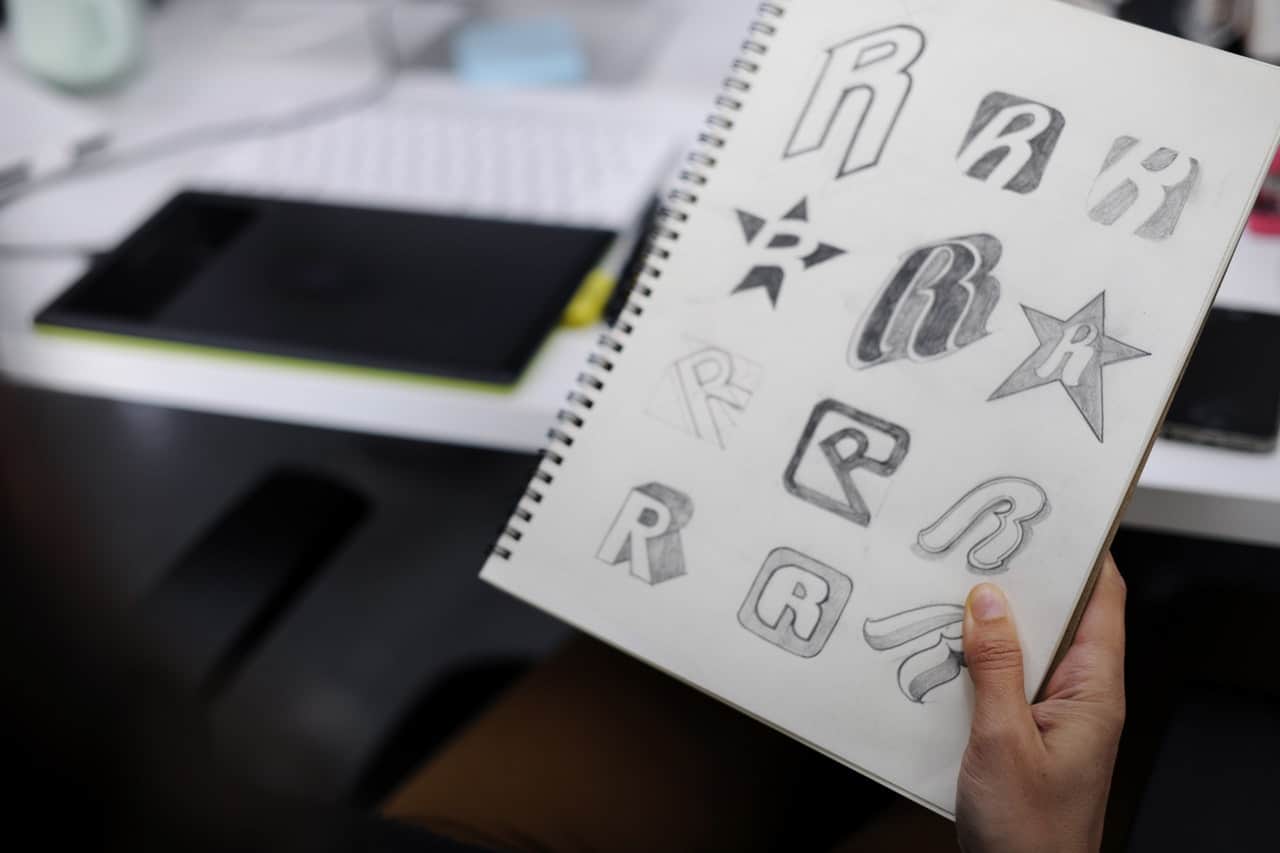Branding is a visual representation of your company, it separates your company from your competitors.
While every business is unique in some way, most businesses have direct competitors that offer most, if not all of the same services or products. In a crowded market how can one company stand out from another? How do you differentiate your product from those of your competitors? The most distinct way is through your company’s branding.
A logo is only part of the system.
While a logo is part of a brand, it’s not the brand itself. Branding is an encompassing term that not only includes the logo, but also the company’s colors, typography, iconography, style and much more.
Branding is a holistic strategy that (most often) visually represents your company (it can also encompass non visual things, but that might be more than can fit in this article). Branding gives customers clues as to the personality and purpose of your company. This queues have a big impact on our impression of a product or service— and many times that impact happens subliminally.
Colors, typography, and iconography all have unique characteristics that can lend cohesion to a message without having to use words at all. All of these elements play a vital role in strengthening your message reinforcing your identity that differentiates you from your competitors.
Sending Mixed Messages is a BIG problem.
And it’s one of the most common mistakes I see small businesses make.
This can be from using different logos for the same company, inconsistent colors, typography that doesn’t match the message and much more.
While it’s important to have a clear strategy and uniquely identifiable branding, what’s even more important is being consistent.
When a company uses a variety of fonts, changes their colors, or even uses a completely different logo they are sending mixed messages, causing confusion and essentially creating a competitor for themselves.
Customers aren’t sure if that’s the same “XYZ Company” they’ve seen before because they have completely altered their appearance. I’ve talked about this before in the article ‘Improve Your Brand Recognition‘ but it’s worth mentioning again and again.
No matter the size of your company or your budget, you can easily and effectively improve your brand recognition by being consistent. The most common way to achieve this is through strong branding guidelines. A brand guideline is just a set of rules for how you represent your company. It will cover the specific colors, fonts, icons and logo usage so that no matter where you company is being displayed it is always consistent.
To help us unpack this a bit more, I actually interviewed a friend and fellow designer who I knew could bring some great insight to this topic. Todd is a web and graphic designer all the way from the UK. He’s a part of my network of specialists and he’s a go-to for design and branding.
Interview with Todd Pitcher – Semibold
I’m Todd Pitcher, a web & graphic designer all the way from the UK. I work with ambitious companies to develop their business through design and digital marketing. I like to keep it simple, do the things I KNOW work and produce results for my clients.
Q: How do you differentiate “a logo” and “branding”?
For me a logo is a part of your brand, albeit an important part. A brand is the is a representation of a company, it’s ethos and vision.
In other words a brand is a business’ ‘why’. From this understanding comes a visual identity, this is the visual representation of your business. This includes colour palettes, icons, logos, symbols and all things visual that make up your business.
In short, a brand is the representation of a business in the consumers view, but a logo is a part of the brand’s visual identity.
Q: What things do you consider when designing a ‘brand’ for a company?
With all my clients I have a discovery phase, this is a conversation about the following topics:
- Their business
- Their goals
- The competitors
- What makes their business unique (USP)
- Plans for the future
- Whether the company already has a brand/visual identity
- Whether certain visual assets would represent their company well
Q: Some great logos are very simplistic, like Nike for example. Anyone could draw that, what makes it good?
I’ve had clients come to me and ask me to design a logo which is as impactful as Nike’s. The thing with this is that when Nike’s logo was designed, it was just another mark.
This is where the importance of branding comes into play. Nike worked hard and grew massively by developing a consistent and impactful brand loved by consumers. Therefore, this brand made the Nike Swoosh the legendary logo it is today.
To reiterate, the logo is just another mark, the company and brand behind it is what makes it so great.
Q: You can buy logos from stock websites, or on sites like Fiverr. Why is that a bad idea?
Your logo is most likely the most commonly shown visual asset of your business. Often people will judge your business based on your visual identity and logo before they even meet you.
A stock logo or a logo from Fiverr will not be fully representative of your business, nor communicate your vision and ethos.
A logo forms your customer’s first impression of your business. Stock and generic logo designs will not portray the impression you really want.
Q: It’s important to be current with style, but aren’t ‘trendy’ logos problematic? Why? How can you be ‘modern’ and ‘timeless’ at the same time?
In my work I avoid big trends, one such example would be gradient based logos. This has been a huge trend recently but a trend which is very predictable. By this I mean I know this trend will die out soon.
The key with logo design is creating a logo which is legible, timeless and memorable. To do this you have to look into history and understand trends in some of the most well known logos today e.g. Apple, Nike, McDonald’s and Coca Cola. All of these logos are simple, flat and work in any colour and size.
So to answer the question “How can you be ‘modern’ and ‘timeless’ at the same time?”, keep it simple, avoid hype trends and create a solution which solves a business’ problem
Q: Why is having a “vector” logo created important? What does that mean?
A vector is an image which stays as clear and crisp at any size. The image is created by maths and fancy equations, not pixels. This means when you expand and contract the vector image it doesn’t blur.
This is absolutely vital for any business. It doesn’t matter if you’re a one man band or an international company, as some point you’ll have to display your logo at different sizes. Therefore having a vector means you have the freedom to do this with no compromise.
Do you have questions or concerns about your branding?
We’re here to help! When trying to grow a business, it’s important that you consider how your message is resonating with your audience. Our branding services start with research so we can analyze your market, what makes you unique and what will help you separate your company from your competitors.
When you’re not there to speak for your company, your branding is. What is your branding saying about your company?




